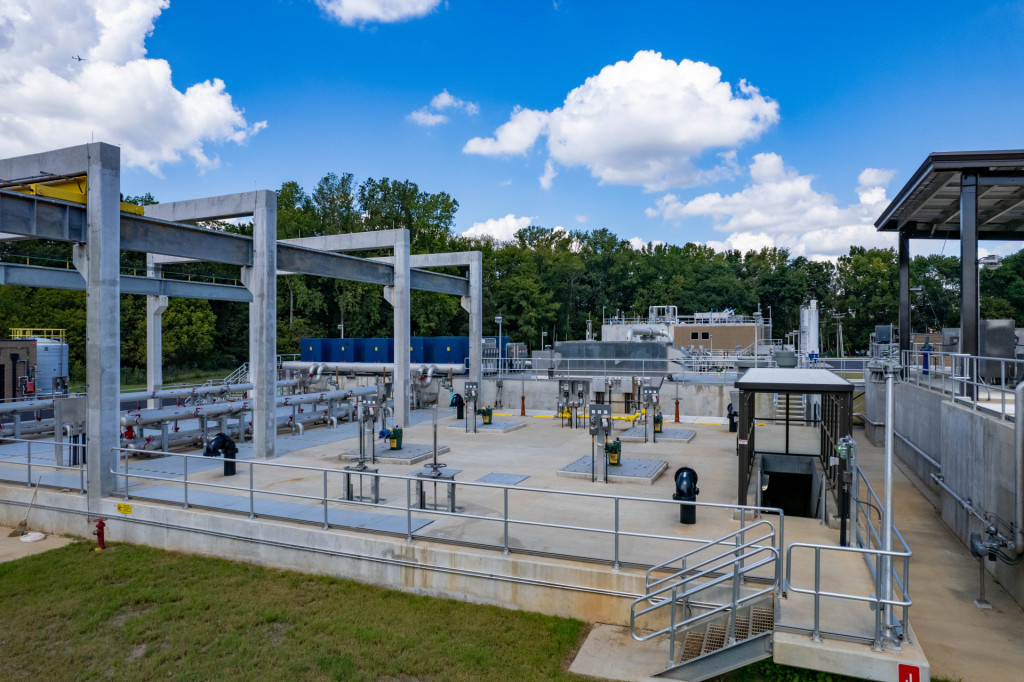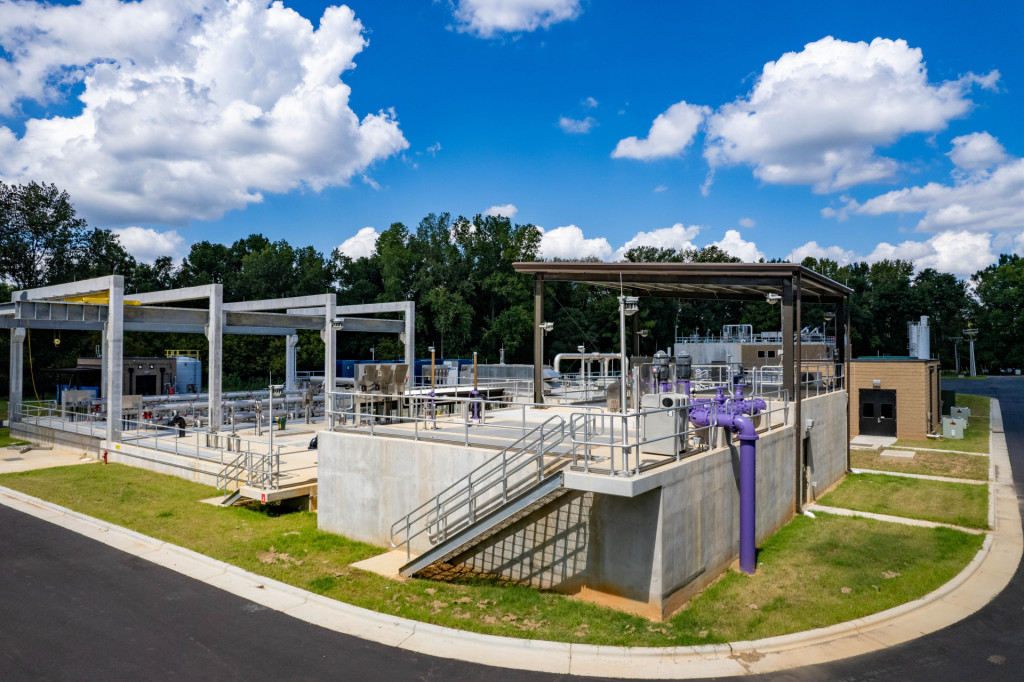Ft. Mill Water Pollution Control Plant 4.5 MGD Expansion (Design-Bid-Build)
Fort Mill, SC
This project consisted of an expansion of the existing Fort Mill Water Pollution Control Plant (WPCP) from 3.0 MGD to 4.5 MGD. An all-new process treatment train was constructed within the former footprint of the solids drying beds. The new train consists of an influent pumping station with a peak flow of 11.25MGD (the current pumps are sized for 12.25MGD) preliminary treatment facility, BNR (biological nutrient removal) basins and MBR (membrane bioreactor) facility as well as associated chemical feed and generator buildings. A smart use of MBR Technology, while not new, membrane bioreactor technology is not seen often in wastewater treatment facilities. The MBR facility is a combination of membrane filtration and biological treatment, using an activated sludge drawn from mixed liquor from the BNR facility. This technology provides enhanced water quality and a reduced footprint. It is also easily expandable, internally, for additional capacity in the future.
Challenging Footprint
The project’s small footprint challenged the team in finding laydown and staging areas. Crowder worked with the owner and design engineer to adjust the plan to allow greater flexibility. Crowder planned the excavation and mass concrete work in the schedule to allow multiple crews to work concurrently, moving in a logical progression from the north to the south end of the site. We closely managed material procurement to provide “just-in-time” deliveries, minimizing on-site materials storage.

 Renewable Energy
Renewable Energy Power
Power Industrial
Industrial Electrical
Electrical Water & Wastewater
Water & Wastewater Transportation
Transportation Fabrication
Fabrication Dams
Dams Diascund Dam Rehabilitation
Diascund Dam Rehabilitation Glenville Lake Dam Rehabilitation
Glenville Lake Dam Rehabilitation Lake Townsend Dam
Lake Townsend Dam Langley Pond Dam Rehabilitation
Langley Pond Dam Rehabilitation Table Rock Dam and Intake Structure
Table Rock Dam and Intake Structure Crowder Wins 2024 Construction Excellence Award
Crowder Wins 2024 Construction Excellence Award Women of Construction and Engineering: Three Women; Three Stories
Women of Construction and Engineering: Three Women; Three Stories A Rad Skatepark Lies Atop 5.2 Million Gallons of Water
A Rad Skatepark Lies Atop 5.2 Million Gallons of Water Harnessing the Transformative Potential of Collaborative Delivery to Achieve Diversity, Equity, and Inclusion
Harnessing the Transformative Potential of Collaborative Delivery to Achieve Diversity, Equity, and Inclusion An Optimistic Outlook on Aging Water Infrastructure
An Optimistic Outlook on Aging Water Infrastructure


















